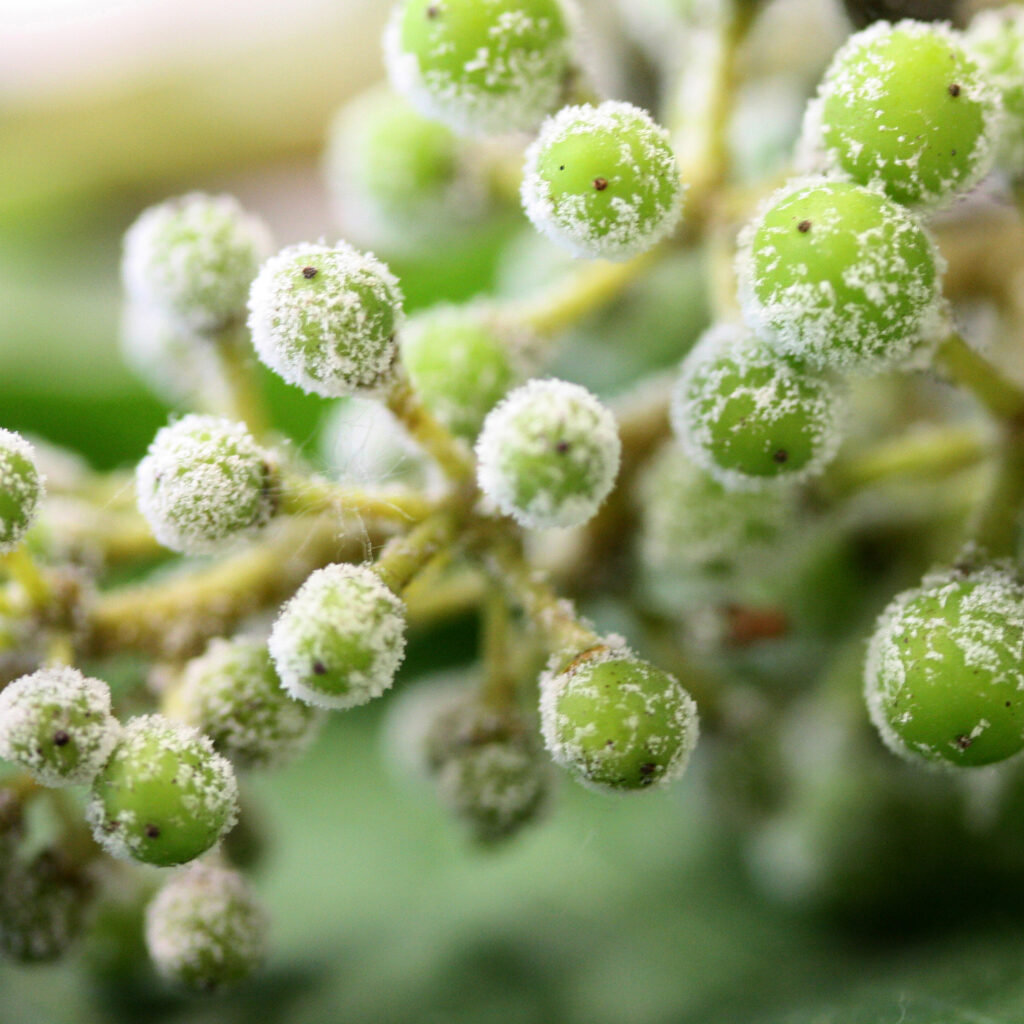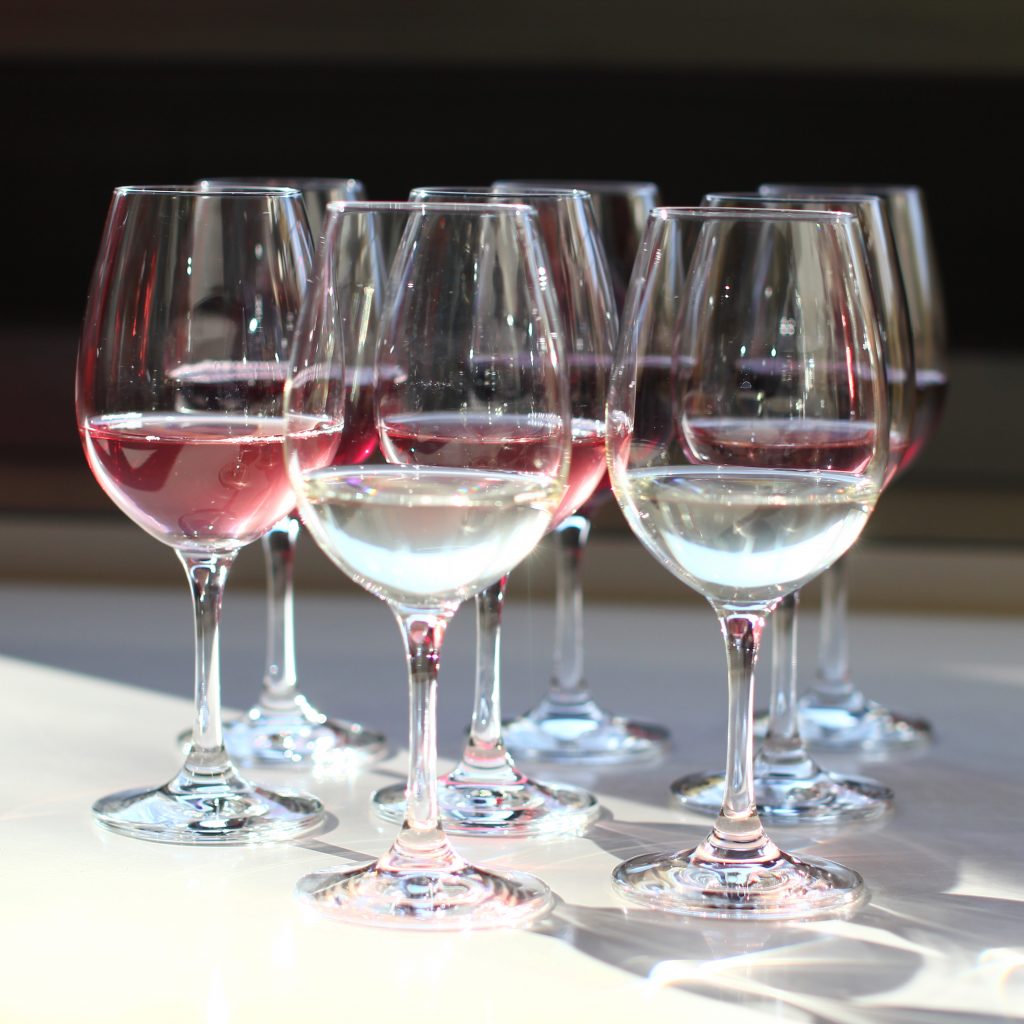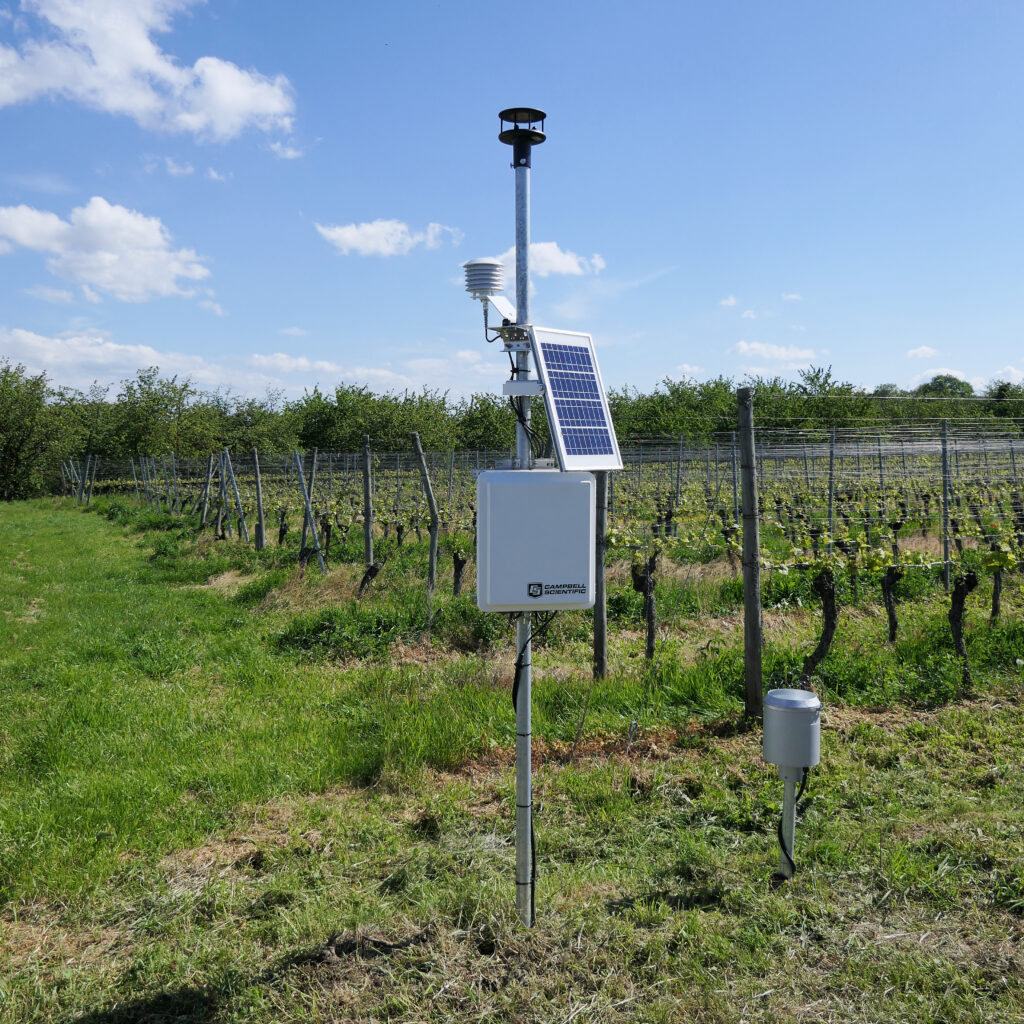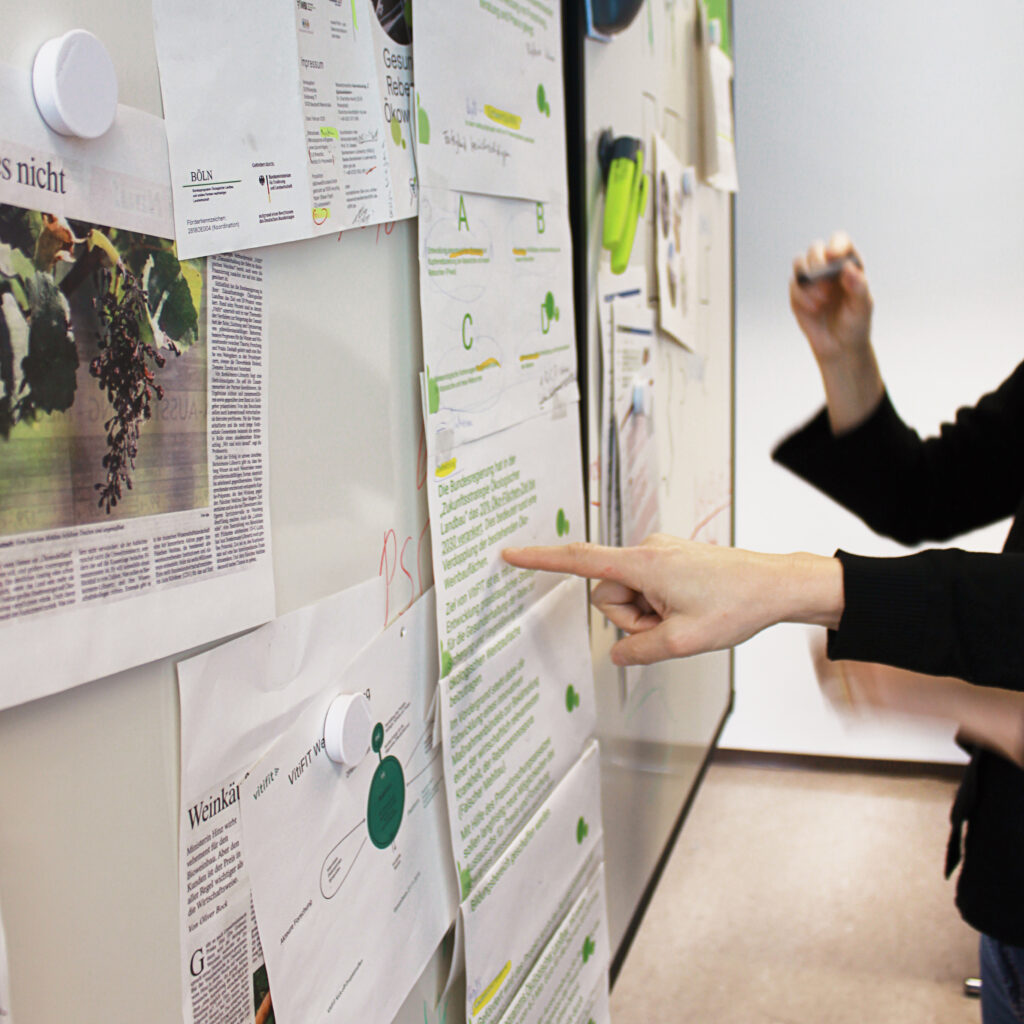Project Priorities

Area A
Development and optimization of crop protection strategies against downy mildew in organic cultivation of established and new grape varieties
Unfortunately, copper-containing plant protection products are still the only effective and approved method of combating vine peronospora in organic viticulture. However, with respect to soil and water protection, organic viticulture provides for a reduction, if not the complete abandonment of copper-containing plant protection agents.
For this reason, Area A is primarily concerned with research approaches to innovative, copper-minimizing plant protection strategies. Various plant extracts and improved formulations will be tested for their effectiveness. In addition, the biological effectiveness of copper salts is to be optimized and a reduction of the input is to be achieved by the process of microencapsulation, so-called CuCaps.
In addition, further practicable processes and technical solutions are to be developed and optimized individually and in combination at various locations. These include viticultural measures such as targeted defoliation and the use of soil covers, the application of new active substances and UV-C radiation. These measures are tested on classic and, in some cases, new, resistant grape varieties.
With regard to a possible re-certification of potassium phosphonate, its absorption, shifting and depot formation in vines, must and wine is being investigated on classical grape varieties.
In addition, the application of organic plant protection products is being examined to determine whether it has negative effects on the ecosystem of the vines’ leaves and leaf sheaths.
Contact:
Hochschule Geisenheim University (HGU): N.N.
Involved institutions:
- Bayerische Landesanstalt für Weinbau und Gartenbau (LWG)
- Dienstleistungszentrum Rheinhessen-Nahe-Hunsrück (DLR-RNH)
- Dienstleistungszentrum Rheinpfalz (DLR-RP)
- F.-A.-Universität Erlangen-Nürnberg: Lehrstuhl für Bioverfahrenstechnik (BVT)
- Julius Kühn-Institut Bundesforschungsinstitut für Kulturpflanzen (JKI)
- Staatliches Weinbauinstitut Freiburg (WBI)
- Weincampus Neustadt
- Trifolio-M
- uv-technik Speziallampen

Area B
Breeding, wine stylistics, market acceptance and economic feasibility studies of new grape varieties
Area B is concerned with the development and establishment of new fungus-resistant grape varieties. In grape breeding, new resistances to the pathogen causing downy mildew (Plasmopara viticola) are identified in previously unused genetic resources and crossed into current breeding strains. Viticultural variety characteristics are categorized and clones are selected in order to develop or refine grape varieties that produce the most stable and long-lasting resistance to the pathogen and have an extended genetic base.
At the same time, the wine quality and style of existing new varieties is to be further optimized and adapted to consumer needs.
New grape varieties have the potential to reduce the use of pesticides. This results in economic advantages for winemakers and ecological benefits for the environment. In order to quantify these correlations, the operational aspects and sustainability effects along the entire value chain from the breeder to the production plants and distribution channels are evaluated with the help of digital time recording, surveys, market experiments and case studies.
Additionally, a target group and channel-specific marketing and communication strategy is to be developed by means of a six-stage investigation concept in order to help these varieties to achieve greater success in the wine market.
Contact:
Julius Kühn-Institut Bundesforschungsinstitut für Kulturpflanzen (JKI): Reinhard.Toepfer@julius-kuehn.de
Involved institutions:
- Dienstleistungszentrum Rheinpfalz (DLR-RP)
- Hochschule Geisenheim University (HGU)
- Weincampus Neustadt

Area C
Adaptation of the forecast model “VitiMeteo Rebenperonospora“ to new grape varieties and organic viticulture
Area C deals with the prognostic model “VitiMeteo Rebenperonospora” and aims to optimize this model for the use of organic production methods by adapting it to new grape varieties bred for fungal resistance.
The “VitiMeteo Rebenperonospora” model is a valuable decision-making aid for winegrowers when scheduling a plant protection measure. By processing relevant weather parameters, the system indicates periods of time during which infections and spore formation are possible. Moreover, the course and length of the incubation period of the vine peronospora is calculated. The current model version, also integrates a growth model. To adapt the system to new grape varieties, various parameters must be recorded and evaluated over the entire season. For this purpose, data on the sensitivity of the different grape varieties to vine peronospora must be collected. Furthermore, differences in the phenologic development of the plant must be determined in order to reliably predict the occurrence of these sensitive stages. Once the resistance properties of the new grapevine varieties to the pathogen have been precisely identified and characterized, the grapevine varieties are divided into clusters according to the properties determined. The corresponding algorithms are then adapted and integrated into the existing prognostic model.
The adapted prognostic model should reduce the application of plant protection products to such an extent that the sensitive development stages of the new grapevine varieties are reliably protected and underlying resistance mechanisms are not negatively influenced by the grapevine peronospora.
Contact:
Staatliches Weinbauinstitut Freiburg (WBI): Rene.Fuchs@wbi.bwl.de
Involved institutions:
- Bayerische Landesanstalt für Weinbau und Gartenbau (LWG)
- Hochschule Geisenheim University (HGU)
- GEOsens GmbH

Area D
Knowledge transfer, networking and communication between research and practice
Area D is concerned with the development of concepts to optimize networking, transparency and the information flow between actors from research and practice, in order to accelerate knowledge and technology transfer in the field of organic crop protection.
To this end, the cooperation of the various research institutions is to be promoted and the participation of wineries and businesses in the research process made possible. Transfer points for knowledge and information are to be identified and existing networks expanded.
This project website has already been implemented and an interactive exchange platform in the form of a web application will be developed and made available to all project partners and all interested parties. This will enable a direct exchange within and between the systems during the project duration. Thus, everyone, researchers as well as winemakers, will have the possibility to receive and evaluate each other’s suggestions.
Already during the project period, by means of events (including fora, seminars, workshops, and field days) findings and results from the thematic areas can be communicated with the applied viticulture sector which in turn feeds back into Area D, which structures and processes the information and communicates it with the respective research institutions. Through this intensive, timely transfer of knowledge, practical and application-oriented research is assured.
Furthermore, multipliers will be trained, working materials will be prepared and a concept for education and continued education will be developed. The contents and results from all topics areas are prepared for specific target groups and fed into the information channels of the practice, research, consulting and business sectors.
It is also planned to form a Practice Research Network with a focus on “Crop Protection in Organic Viticulture.” At the end of the project period, there shall be available a practical action concept for winegrowers to further reduce the use of copper in the organic viticulture.
Contact:
Dienstleistungszentrum Ländlicher Raum Rheinpfalz (DLR-RP): Charlotte.Hardt@dlr.rlp.de
Involved institutions: